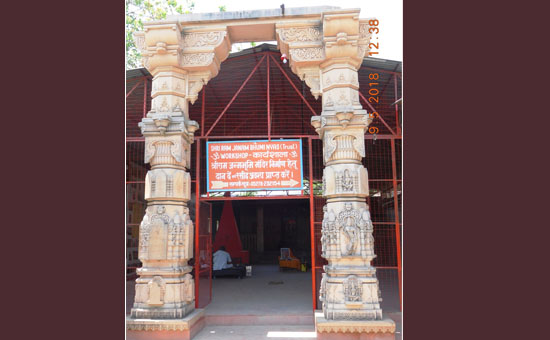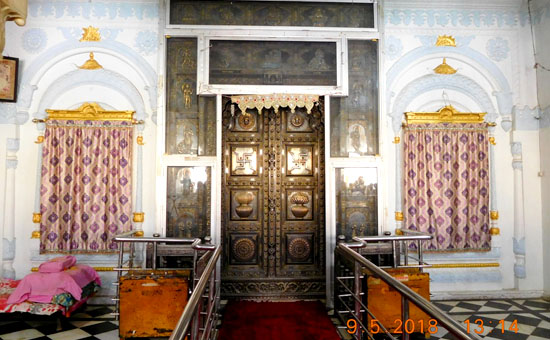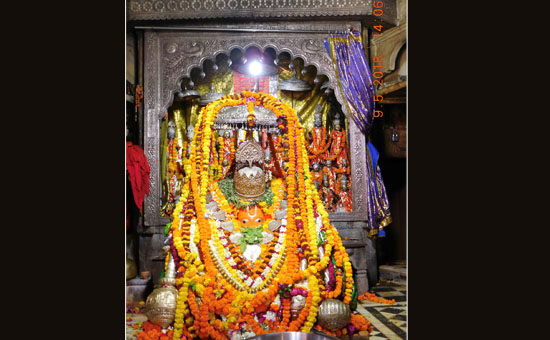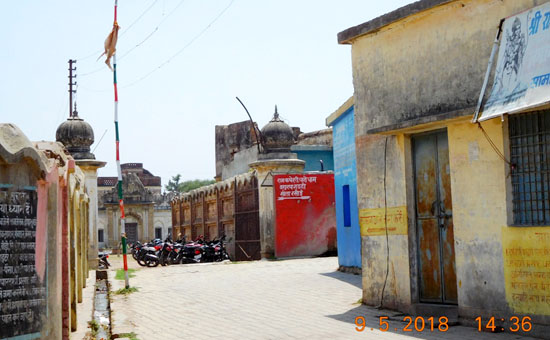My husband Krishnan and I along with my mother had the opportunity to visit Ayodhya on May 9, 2018. The first thing that struck me was that only in India, the birthplace of Bhagwan Ram, a historical figure and Vishnu's 7th avatar, can be in a district named Faizabad.
I have never understood how there can be a dispute over building a temple in the place where he was born! The Ram Janam Bhumi case is truly surprising and shows the dirty ugly side of secular politics in our country. It's also in some ways a concerted effort to demean, discredit and devalue Hinduism and our Gods and Goddesses. This effort has been on since the 13th century when Muslim
invaders started their invasions and then the colonial powers lay siege for 200
years.
Nothing against Islam and Christianity but politics and religious fanatics always create trouble and especially in India. Hinduism is the oldest religion in the world and has a rich knowledge base in its scriptures. It's egalitarian and non-dogmatic and hopefully it continues to survive as a way of life for millions.
That said, the reason we visited Ayodhya this time is because on Jan 21st we attended a lecture at Srijan Foundation by Nilesh Oak on 17,000 years of unbroken Indian Civilization. Nilesh has dated the Ramayana to 12209 BCE and the Mahabharata to 5561 BCE. He has used data and corroborative evidence from astronomy, oceanography, geology, history of rivers etc to arrive at his conclusions in a scientific manner. He has written a book called "The Historic Rama" that's available on Kindle.
Here
is an interesting excerpt from the book –
"..... Rama was 17 years old at the time of his departure to the forest and since he lived away from Ayodhya for 14 years, he was 31 years old when he returned to Ayodhya. Lava and Kusha were born within a year’s time after Rama and Sita returned to Ayodhya and thus we can estimate the year of their birth to be that of 12208 BCE. Lava and Kush were approximately 12 years old when they arrived at the court of Rama to recite Valmiki’s Ramayana and thus Valmiki composed Ramayana sometime between 12208 BCE and 12196 BCE. We can define, albeit tentatively, 13th Millennium BCE as the Ramayana Millennium....".
I
wish there is more research done on Ramayana and Mahabharata so that they are
moved from the category of myth to history.
It was a two and half hour drive from Lucknow to Ayodhya. We first reached the workshop where they are making the pillars and doors of the proposed Ram Mandir at the Shri Ram Janam Bhumi site should they win the case. As we neared Ayodhya two young boys chased us to be our tour guides. We gave in and told them clearly not to take us to any "pandit" who will ask for money.
 Shri Ram Janam Bhumi workshop entrance
Shri Ram Janam Bhumi workshop entranceFor
anyone visiting the Shri Ram Janam Bhumi site - please remember to reach before 11 am or after 2 pm as the Supreme Court has ordered that
the site be closed between 11am to 2pm.
From the workshop we went to the supposed "palace" where Lord Rama grew up. Obviously the palace is built in recent times, but the temple is quaint. At the palace we saw Devi Sita's kitchen where she supposedly cooked her first meal after getting married to Bhagwan Ram. It's just a big hall where currently people cook meals for the pilgrims. When Sita arrived in Ayodhya as a bride, Queen Kaikeyi was the first to see her and gifted her a palace called "Kanak Bhavan" which is now a temple. We went there next and managed to get a peek at the murti of Maa Sita before they closed the temple.
“At this temple don't miss the carving of the "dashavatars" of Lord Vishnu on the temple door.”
 Temple door Kanak Bhawan with dasavatars
Temple door Kanak Bhawan with dasavatarsFrom
Kanak Bhavan the two boys took us to the car park where we had to wait for the Shri
Ram Janam Bhumi site to open. We used the time to see river Sarayu. The steps that lead
to the river were decked up during Diwali last year so we wanted to see it. The
place was relatively clean as was all of Ayodhya. We sat around in this place
for a few minutes, sprinkled the river water on our heads and then drove back to
the car park near Shri Ram Janam Bhumi.
Just before reaching the car park, we visited the Hanuman temple at "Hanuman garhi".
There are 70 steps leading to this beautiful temple, so my mother waited at a
shop instead of coming with us. One of the shops refused to let her sit since
we refused to buy the “bhog” from him, but another shop keeper asked her to
sit. The Hanuman murti in this temple is super cute. There were several people
taking selfies with him. As is the tradition we visited the Hanuman temple
first before going to the Ram Janma Bhoomi. Interestingly
the Nawab of Awadh built this Hanuman temple, so all the religious divide that
we see around us is of recent origin and politically fuelled.
 Hanumanji
HanumanjiFrom the Hanuman temple we went to the Shri Ram Janam Bhumi using a rickshaw as it was blistering and the heat unbearable. We didn't wait for the site to open. You need to walk for about 750 meters to a kilometer inside to see the entire place. We certainly hope to come back when the weather is milder to see the site and hopefully the temple is built soon.
 Entrance to Shri Ram Janam Bhumi site
Entrance to Shri Ram Janam Bhumi site Best time to visit Ayodhya is October to March. Nearest city is Lucknow.
Suggestions – Take a cab. Driving in Ayodhya is a nightmare with narrow roads and unruly traffic. There are no places to leave your footwear, so it’s easier to leave it in the car. During the summer months, your feet will burn up. Splash water on them before leaving the car and walking into the temple.
Author is an Executive Coach,
Co-founder www.Shikshadaan.com and blogs at www.90rollsroyces.com
Pictures that form part of the article are by Author. Title pic is by Sanjeev Nayyar.